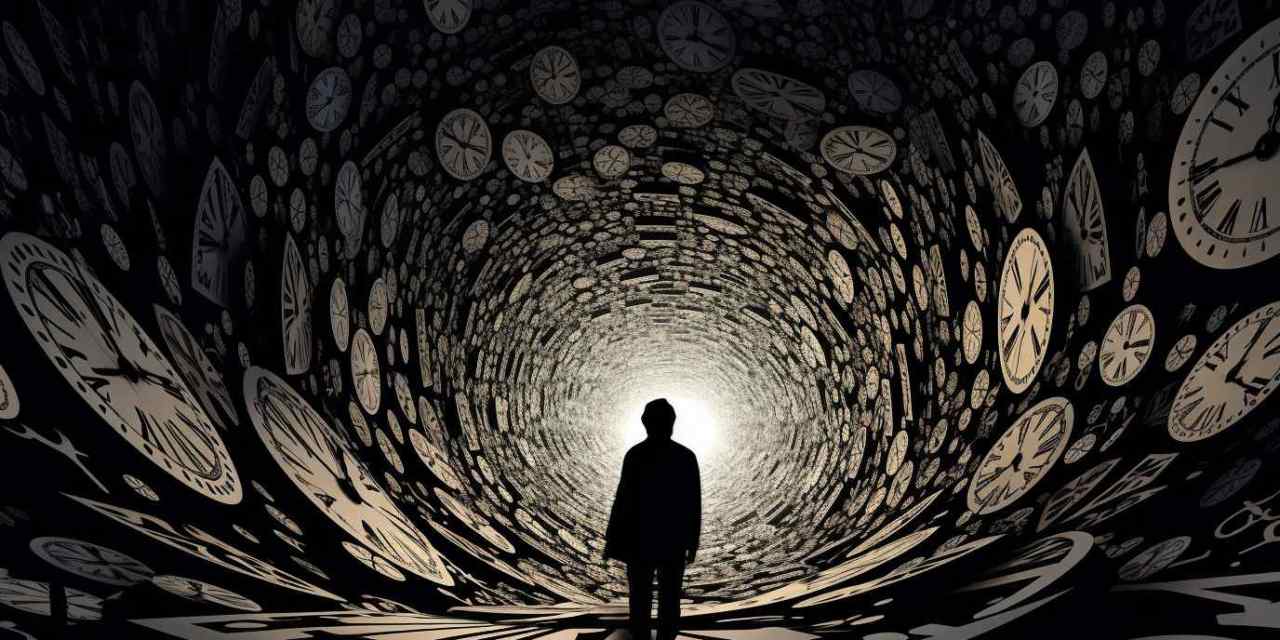Author Note: “This looks very like a book review but conceals a guilty secret to be revealed in the afterword comments.”
David Langford’s choice of neglected SF Author
“E.H.B.” followed a tried and tested recipe for becoming a forgotten author. He published only one book which whirled away to oblivion in the torrent of late-Victorian popular fiction; he hid his name behind dully unmemorable initials, not even his own; he wrote poorly. Who Put Back The Clock? (1889) duly became yet another remarkable work which appeared for several days upon the railway bookstalls, and then vanished entirely from the face of the earth. Max Beerbohm alluded to it in an essay and the encyclopaedic Brian Stableford mentions it in passing as a work just outside the scope of his Scientific Romance in Britain 1890-1950; as far as the mass of SF reference works is concerned, the novel might never have existed.
This is a shame, because it does in fact contain a nasty glimpse of eternity which seems to have influenced SF in an indirect way … perhaps via J.B.S. Haldane, the noted scientist and popularizer of science. Haldane’s essay “Some Consequences of Materialism” (in The Inequality of Man, 1932) actually quotes — without acknowledgment — chunks of pure “E.H.B.”
The novel’s thesis is the quintessence of Victorian materialism, and its form vaguely anticipates the “scientific puzzle” story. The hero seems to relive his life again and again. Unlike the protagonist of Ken Grimwood’s Replay he is powerless in spite of his foreknowledge, unable to change a single event or even speak one altered word. And all this is explained without any traditional recourse to magic, madness or “then he woke up”.
Incidentally, one reason for the book’s failure might be its sole bit of storytelling originality. By way of build-up Chapter II reappears virtually unchanged as Chapter V, and III as VI, with the explanation of this ploy so long deferred that I suspect many people were exasperated into throwing away the “faulty” volume. Such is the fate of experimental narrative.
Its ultimate answer lies in the theory of hard-core materialism later and rather better expounded by Haldane. Over infinite time, “E.H.B.” argues, everything must recur. There are only so many combinations of atoms to be worked through. Every life will be lived again, infinitely often, identically and deterministically. “Every two persons who meet in the present life have a finite possibility of meeting again, and will therefore do so an infinite number of times, in each case to be parted once more.” I quote one of Haldane’s verbatim quotations; in the original novel, the sentence meanders on for another two hundred-odd words. And it’s supposed to be a single flash of “tragic intellectual effort” at the moment of death!
Even in this author’s long-winded prose, the vision is genuinely chilling. Eternal boredom, eternal impotence, eternal punishment without even a vengeful God to blame. An innovator can perhaps be forgiven a few logical shortcomings: isn’t the exact material identity of successive lives inconsistent with the “inherited” memory that all this has happened before? (Exit Cartesian dualism, pursued by a bear.)
I should say that I can find no evidence that Ken Grimwood, or the James Tiptree Jr of “Her Smoke Rose Up Forever”, or Charles Harness (The Ring of Ritornel), or other obvious SF inheritors of the general notion were ever directly aware of Who Put Back The Clock? But Haldane’s books of essays had a very wide circulation indeed.
Little is known about “E.H.B.” himself. He was reportedly a barrister whose real name was Forsyth, the initials having been “borrowed” from a relative; his life seems to have been humdrum; he never acknowledged his single published work and invariably called writing a “childish art”. Nevertheless it was he who first saw and dramatized a nightmare implicit in the infinite materialistic universe of Victorian science. That merits a small footnote in our histories.
Author Note:
[Confession time. As some readers may have guessed, this is a sort-of-Borgesian review of an imaginary book, buttressed by real quotations from the Haldane essay. The 1991 sf convention Mexicon IV wanted several such reviews for its programme book, but mine was the only one that got written. It looked a little lonely there without the expected company. … By way of literary confirmation that this is a fake, the novel’s title, date, author and author pseudonym were all stolen from The Wrong Box (1889) by Robert Louis Stevenson and Lloyd Osbourne.]

Preparing for groundhog day.






Hello Human. I hope you enjoyed this magnificent story. Please support SciFiwise.com and our authors by:
- Rate and React to this story. Feedback helps me select future stories.
- Share links to our stories and tell your human friends how charming I am.
- Click on our affiliate links and buy books written by our talented authors.
- Follow me on twitter: @WiseBot and also follow @SciFiwise.
Thank you!
WiseBot










 VISIT AUTHOR:
VISIT AUTHOR:  SHOP AUTHOR:
SHOP AUTHOR: 



